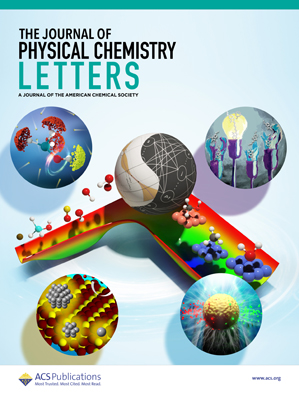预测催化反应效率和选择性的数字描述符
IF 4.6
2区 化学
Q2 CHEMISTRY, PHYSICAL
引用次数: 0
摘要
准确控制多个活性位点(如金属、空位和杂原子的孤对)之间的相互作用和动态变化以实现高效催化性能,是涉及二维金属支撑催化剂、金属沸石、金属有机催化剂和金属酶的复杂催化反应设计中的关键问题和挑战。借助机器学习(ML),描述符在优化催化剂的电化学性能、阐明催化活性的本质以及预测更高效的催化剂方面发挥着核心作用,从而避免了耗时的试错过程。活性中心描述符、界面描述符和反应途径描述符这三种描述符对于理解和设计金属支撑催化剂至关重要。具体来说,空位作为活性位点与金属协同作用,可显著促进能量相关小分子的还原反应。通过结合一些物理描述符,可以构建可解释的描述符来评估催化性能。描述符和 ML 模型的未来发展面临着为多催化系统中的空位构建描述符以合理设计催化剂的活性、选择性和稳定性的挑战。利用生成式人工智能和多模态 ML 自动提取描述符将加速对动态反应机制的探索。从金属支撑催化剂到人工金属酶的可转移描述符为能源转换和环境保护提供了创新解决方案。本文章由计算机程序翻译,如有差异,请以英文原文为准。

Digital Descriptors in Predicting Catalysis Reaction Efficiency and Selectivity
Accurately controlling the interactions and dynamic changes between multiple active sites (e.g., metals, vacancies, and lone pairs of heteroatoms) to achieve efficient catalytic performance is a key issue and challenge in the design of complex catalytic reactions involving 2D metal-supported catalysts, metal-zeolites, metal–organic catalysts, and metalloenzymes. With the aid of machine learning (ML), descriptors play a central role in optimizing the electrochemical performance of catalysts, elucidating the essence of catalytic activity, and predicting more efficient catalysts, thereby avoiding time-consuming trial-and-error processes. Three kinds of descriptors─active center descriptors, interfacial descriptors, and reaction pathway descriptors─are crucial for understanding and designing metal-supported catalysts. Specifically, vacancies, as active sites, synergize with metals to significantly promote the reduction reactions of energy-relevant small molecules. By combining some physical descriptors, interpretable descriptors can be constructed to evaluate catalytic performance. Future development of descriptors and ML models faces the challenge of constructing descriptors for vacancies in multicatalysis systems to rationally design the activity, selectivity, and stability of catalysts. Utilization of generative artificial intelligence and multimodal ML to automatically extract descriptors would accelerate the exploration of dynamic reaction mechanisms. The transferable descriptors from metal-supported catalysts to artificial metalloenzymes provide innovative solutions for energy conversion and environmental protection.
求助全文
通过发布文献求助,成功后即可免费获取论文全文。
去求助
来源期刊

The Journal of Physical Chemistry Letters
CHEMISTRY, PHYSICAL-NANOSCIENCE & NANOTECHNOLOGY
CiteScore
9.60
自引率
7.00%
发文量
1519
审稿时长
1.6 months
期刊介绍:
The Journal of Physical Chemistry (JPC) Letters is devoted to reporting new and original experimental and theoretical basic research of interest to physical chemists, biophysical chemists, chemical physicists, physicists, material scientists, and engineers. An important criterion for acceptance is that the paper reports a significant scientific advance and/or physical insight such that rapid publication is essential. Two issues of JPC Letters are published each month.
 求助内容:
求助内容: 应助结果提醒方式:
应助结果提醒方式:


